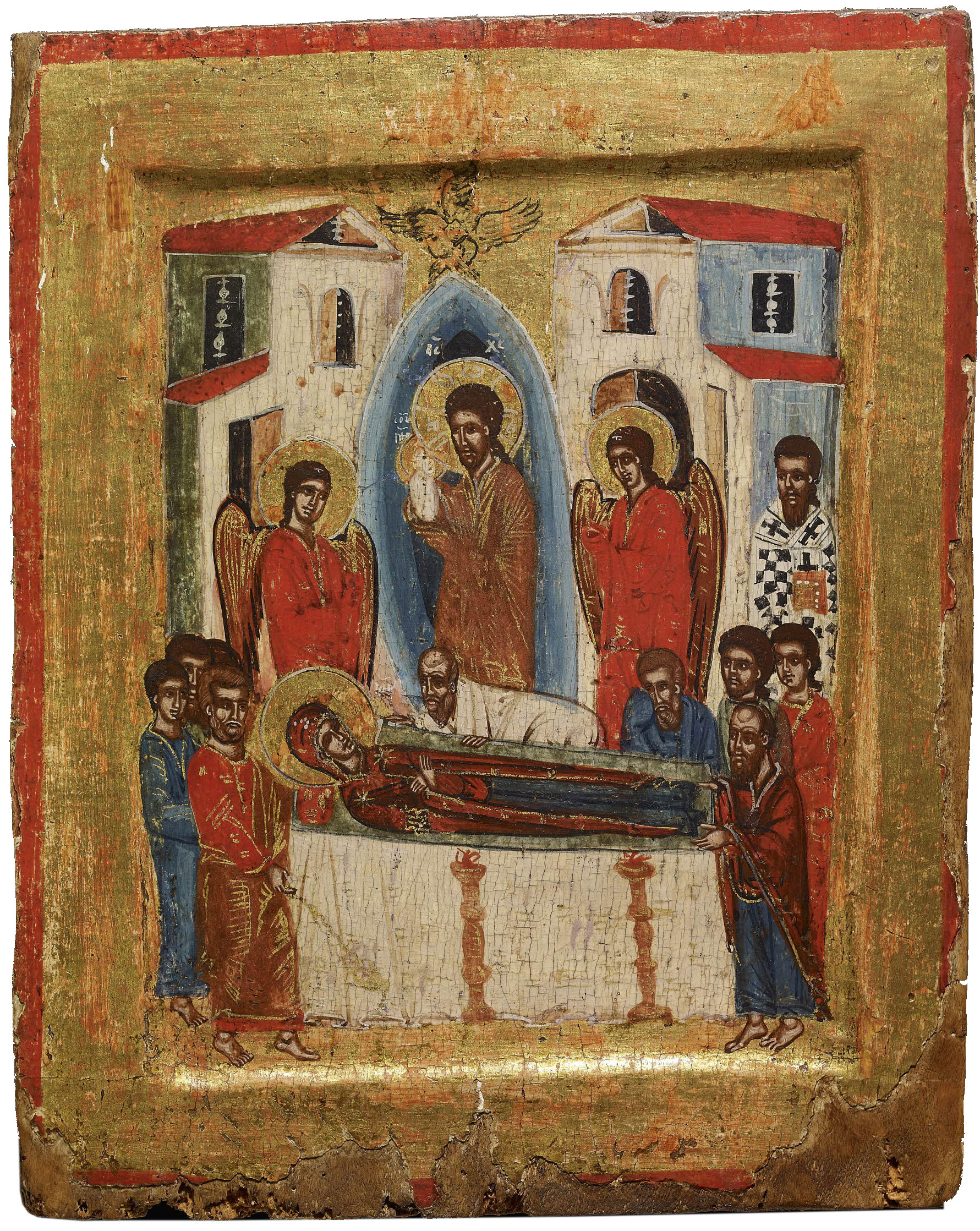The icon is painted in egg tempera with gold leaf on wood primed with cloth and gesso. It has a broad gilded frame, bordered with red. The subject is the Dormition of the Virgin. She is shown on a bier, surrounded by apostles, and this lower section is on a smaller scale than the figures of Christ and the archangels above her, and a seraph above them. The buildings too are disproportionately large. There are two candlesticks in the foreground. She is identified by the abbreviated Greek word MHP (Mother). On either side of the bed are the mourning Apostles. One can easily identify St Peter holding a censer, St Paul standing close to the feet of the Virgin and St John in white garments stooping near her head. In a blue mandorla, topped by a six-winged seraph, is the standing figure of Christ accompanied by two angels. He is identified by the abbreviation IC XC (Jesus Christ), while on his halo is the legend O ω Η (‘He Who Is’) with the Cyrillic letter H at the end instead of the Greek N. This inscription is read from right to left instead of the customary left to right.
Christ is holding the soul of the Virgin represented as a swaddled infant. Next to the angel on the right is a bishop in a black and white phelonion (sleeveless mantle) decorated with multiple crosses (polystavrion), and an omophorion (a long scarf with crosses) denoting his rank. This is an abridged version of the scene as only nine out of the twelve Apostles are shown and only one bishop instead of the usual two or three.
The small size of the icon is presumably the reason for rendering the Dormition in this condensed way. The most important figures, Christ and the Virgin, are much taller than those of the Apostles, whose legs are disproportionately short. The colour palette is quite rich with bright hues of blue and red, creating a joyful atmosphere. The contours are bold and the drapery is rendered in a linear geometrical way with ample use of chrysography. For the flesh areas the painter has used dark brown underpainting and pale ochre for the skin highlighted with a few thick brushstrokes on the forehead and cheeks. Similar stylistic features and inexpressive faces are found in an icon of the Resurrection of Lazarus from the collection of Dr Willy Flachsmann, Zurich. This icon has been attributed to a painter active either in Asia Minor or in the region of Macedonia and dated to the beginning of the 18th century (Lazović and Rossier 1968).
The apparent use of Cyrillic in the inscription of Christ might support a Balkan provenance.
Literature: M. Lazović and E. Rossier, Les icônes dans les collections Suisses: Genève
Musée Rath 14 Juin-29 Septembre 1968 (exh. cat., Musée d’art et d’histoire), Geneva,
1968, no. 122; R. Cormack, Icons, London, 2014 (2nd ed.), 140, no. 110.
Eleni Dimitriadou
